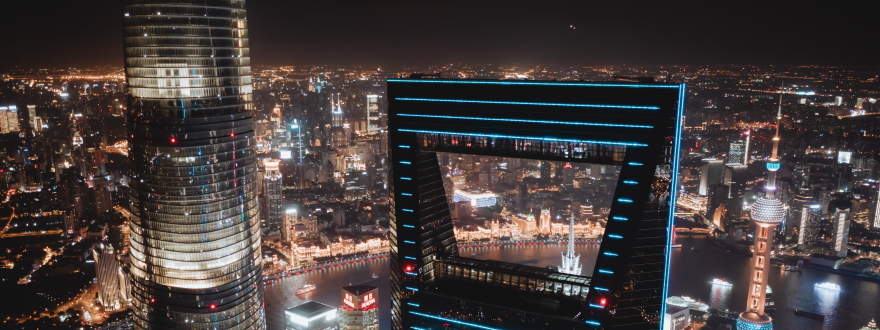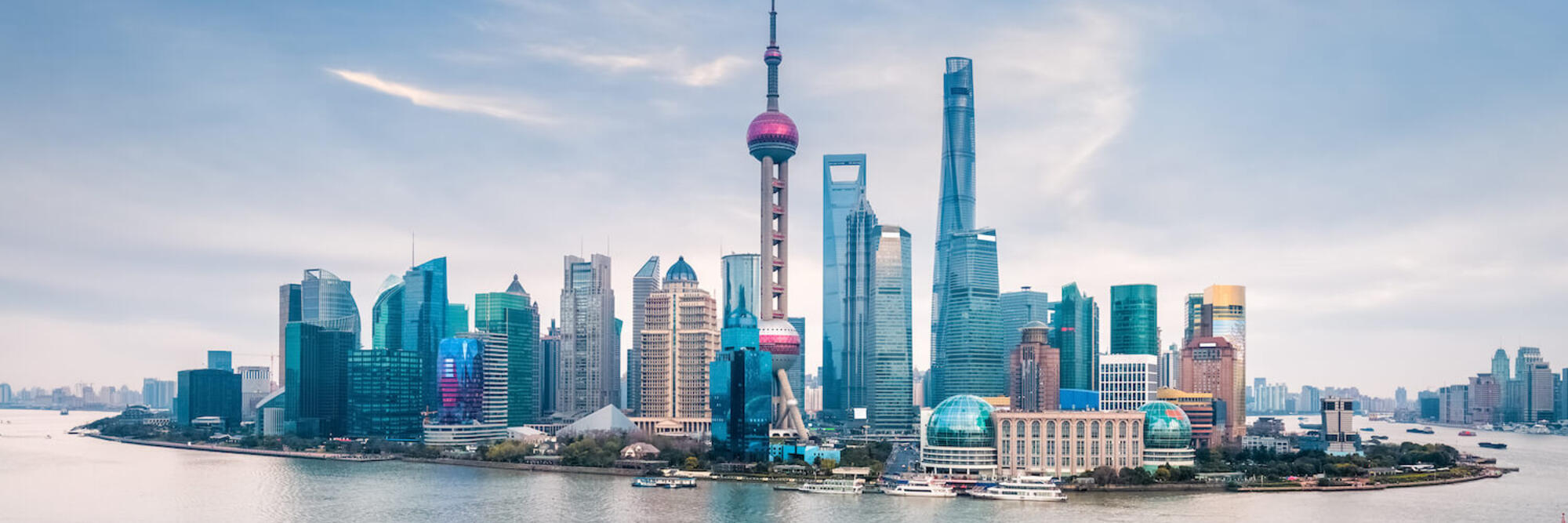- Download our Shanghai Schools Guide
The best places to live in Shanghai
Shanghai is divided into two main areas: Puxi and Pudong. Puxi, located on the west side of the Huangpu River, is the older part of the city, while Pudong, on the east side, is the newer area. The city also has 16 administrative districts, each with its own unique character and charm.
Public transport between Pudong and Puxi is convenient, with tunnels, bridges, and subway lines connecting the two. That said, when choosing areas and suburbs in Shanghai to live in, it’s essential to consider the location of your workplace or your children’s schools to avoid long commutes.
Pudong

Lujiazui
The Lujiazui Financial and Trade Zone can be found on the east side of the Huangpu River and is Shanghai’s most impressive financial and commercial area. Lujiazui is home to the offices of most foreign and domestic banks, the Shanghai Stock Exchange as well as the new World Financial Center and Jin Mao Tower.
Besides impressive office buildings, this area houses several well-managed residential compounds for both apartments and villas, making Lujiazui the recommended area for those wanting to live in downtown Pudong.
Jinqiao
Jinqiao is an organised area with a suburban feel that boasts a strong sense of community. The Jinqiao Export Processing Zone was developed to provide tax incentives for large multinational companies. There are plenty of villa compounds and a few high-end apartment complexes. The area is near a large Carrefour supermarket, restaurants and bars.
International schools, sports grounds and a park are all located here, making Jinqiao ideal for families. Conveniently, residents are close to the Shanghai Pudong International Airport.
Kangqiao
Boasting a mix of modern apartments and traditional homes, Kangqiao is an industrial zone in the south of Pudong that is becoming increasingly popular among expats. Compared to Jinqiao, the area is more spread out and not as well planned, with a slightly rural feel. Nevertheless, many expat families enjoy living in the area because of the international schools and convenient supermarkets in Kangqiao.
Puxi

Changning District
Changning District was one of the first expat areas in Shanghai and is still home to many expats, especially families. It has several good local schools, access to international schools, excellent transport facilities and infrastructure.
It is also close to the city centre and has plenty of green spaces, including the Shanghai Zoo and Zhongshan Park. Changning District is a popular choice for both office and residential life. Many of its foreign residents come from the USA, France, Germany, the UK, and Japan.
Zhongshan Park
Located close to the famous park with the same name, Zhongshan Park has plenty to offer. Besides local housing, this district has several worthy residential complexes. The neighbourhood is generally quiet and less dense but not too far from downtown.
Subway lines offer reliable and efficient transit to other districts, and the travel time to international schools in nearby Hongqiao and Gubei is relatively short. This area attracts mainly singles and couples on lower- to medium-end budgets.
Hongqiao
A former industrial zone, Hongqiao is now a proper neighbourhood. Although it is out of the city centre, it remains popular with expat families thanks to its proximity to several international schools, supermarkets and medical facilities. Hongqiao has good housing infrastructure and several entertainment options for its foreign residents.
Many of the high-end housing facilities are large villas with private gardens and modern amenities. The pedestrianised part of the district, Hongmei Lu, is particularly popular for its entertainment and nightlife offerings.
Minhang
Located in the southwest part of Shanghai, Minhang is a relatively new neighbourhood crossed by the Huangpu River. Known for its quality educational institutions, the district is home to several highly-regarded international schools. You can find medium- to high-end villas and apartments near the schools. Residents also have all the conveniences a family could need – shops, grocery shops, restaurants, bars, and golf courses. When it comes to public transport, Minghang is served by the metro.
Jing’an District
Named after the famous temple and its own landmark, Jing’an is a central district and one of Shanghai’s most popular neighbourhoods among expats. It’s quite dense, offers a variety of low-, medium- and high-end housing, and is a buzzing downtown business and commercial hub.
It is conveniently located close to many of the city’s cultural attractions, as well as many shopping malls, international restaurants, and trendy bars and clubs. Despite its high population density, Jing’an’s public transport system runs seamlessly. This area mainly attracts singles and couples, but some families also live here.
Huangpu District
Huangpu is the heart of Shanghai. Famous attractions like the People’s Square, which houses the Shanghai Grand Theatre and Shanghai Museum, are located here. China’s most famous shopping street, Nanjing Road, also runs through the area.
Stunning Art Deco buildings built in the early 1930s line the Huangpu River, forming ‘the Bund’ (an embankment on the waterfront). It’s one of Shanghai’s most iconic sights and the city’s top tourist attraction. The Bund is especially breathtaking at night when it’s lit up. Since Huangpu is mainly a tourist, shopping, and business district, there are only a few apartment buildings available in the area.
Xuhui District
Xuhui is one of the most crowded areas in downtown Shanghai, with a limited number of high-rise buildings and high property demand, making housing expensive. It is the largest inner district of Shanghai and includes much of the historic former French Concession. The area is known for its beautiful old villas and apartments, and many government officials live here.
There are several popular spots in Xuhui where expats like to gather. One of them is Xujiahui, a busy neighbourhood with a large, bustling intersection surrounded by shopping malls and department shops.
